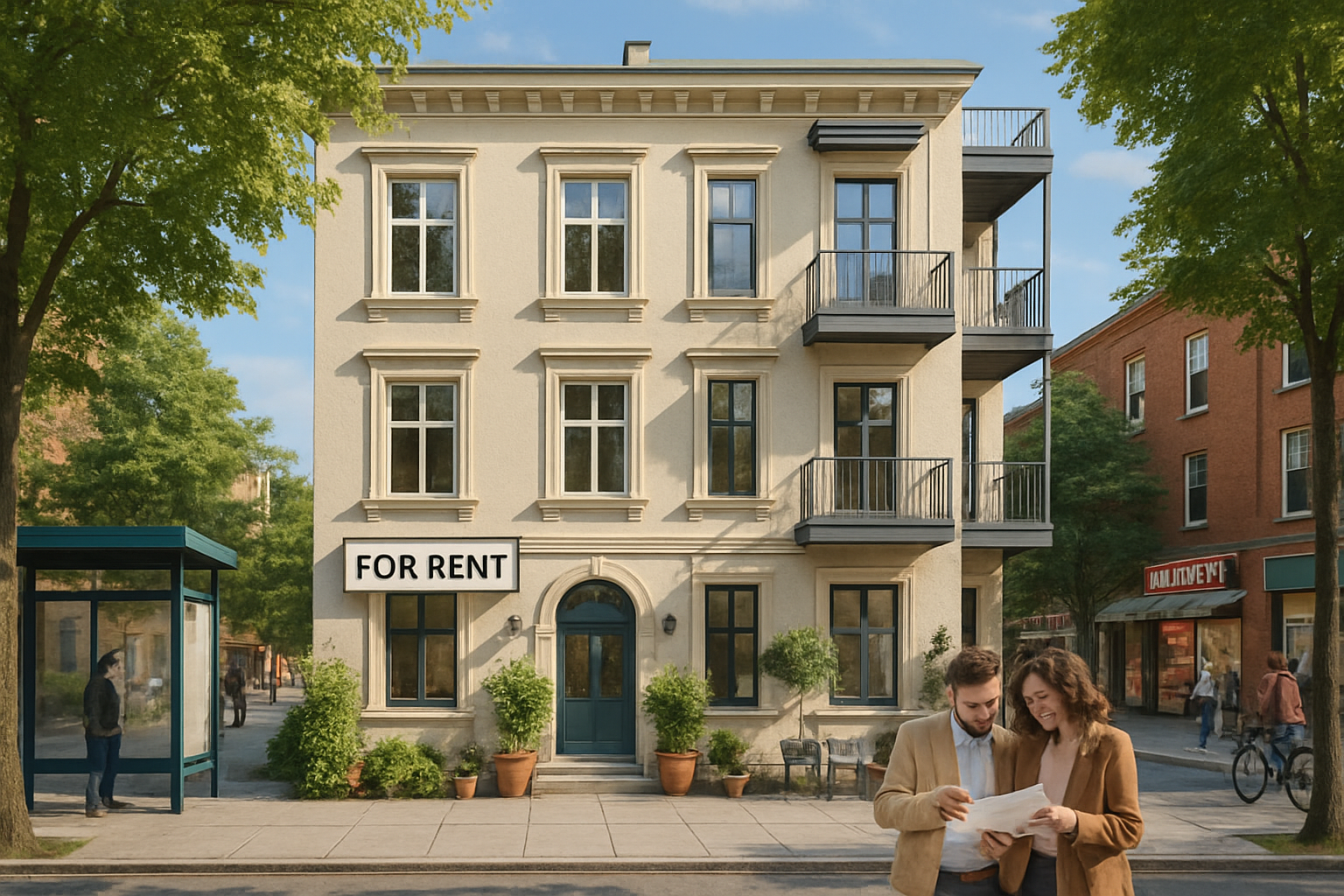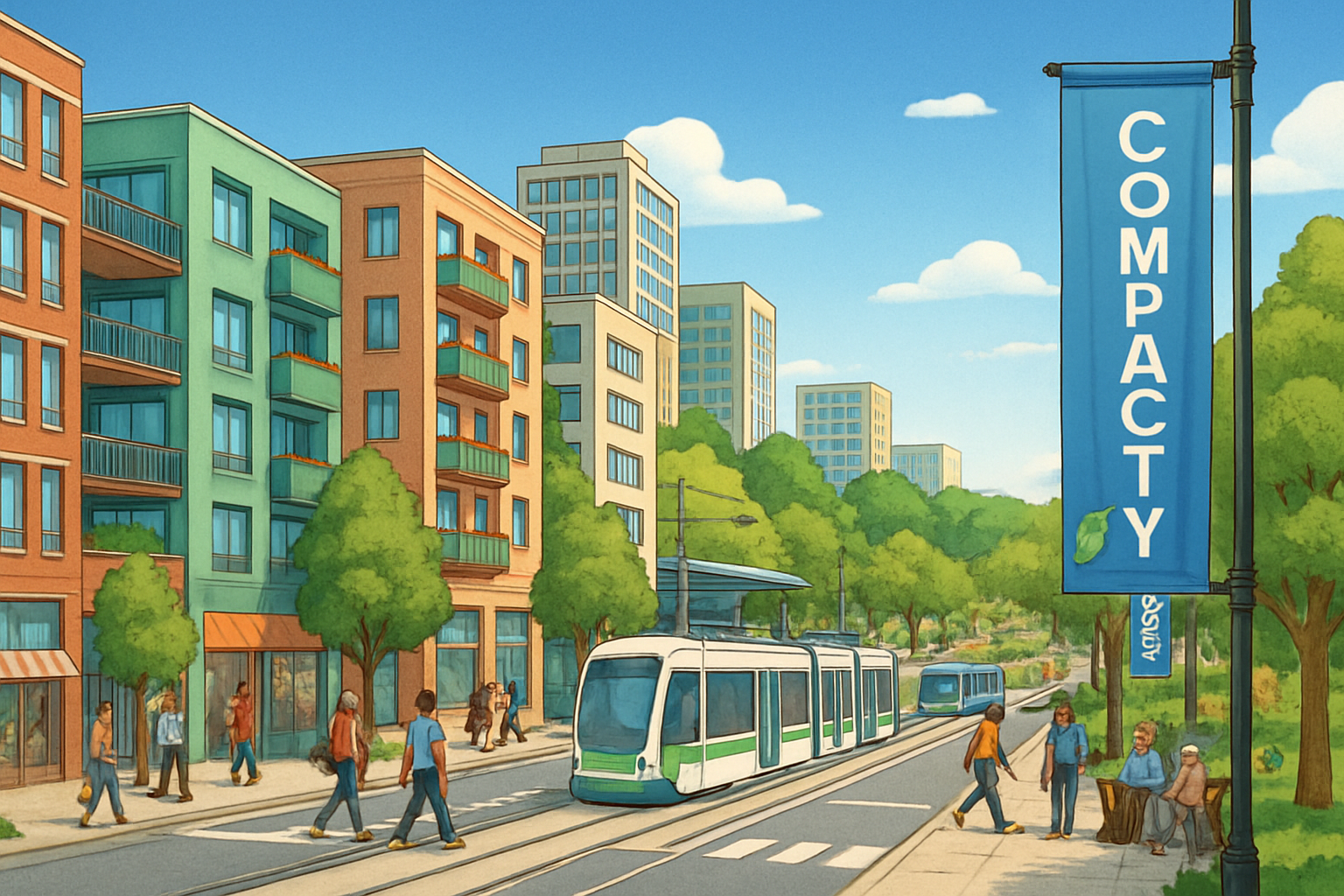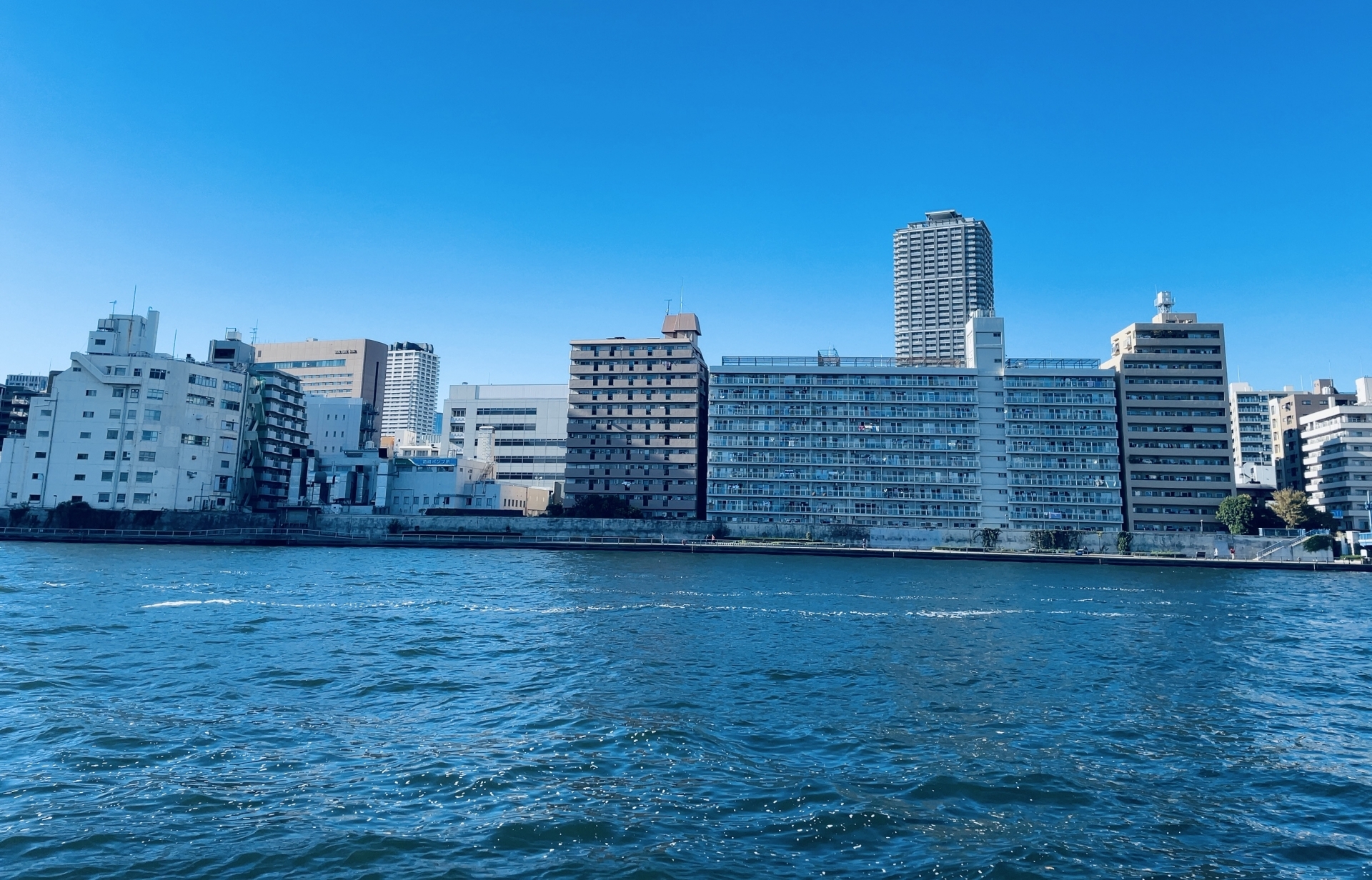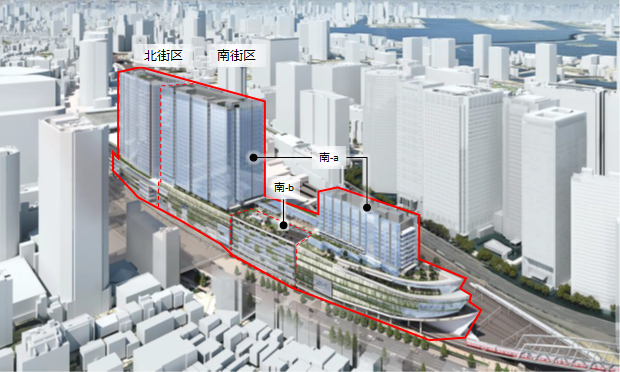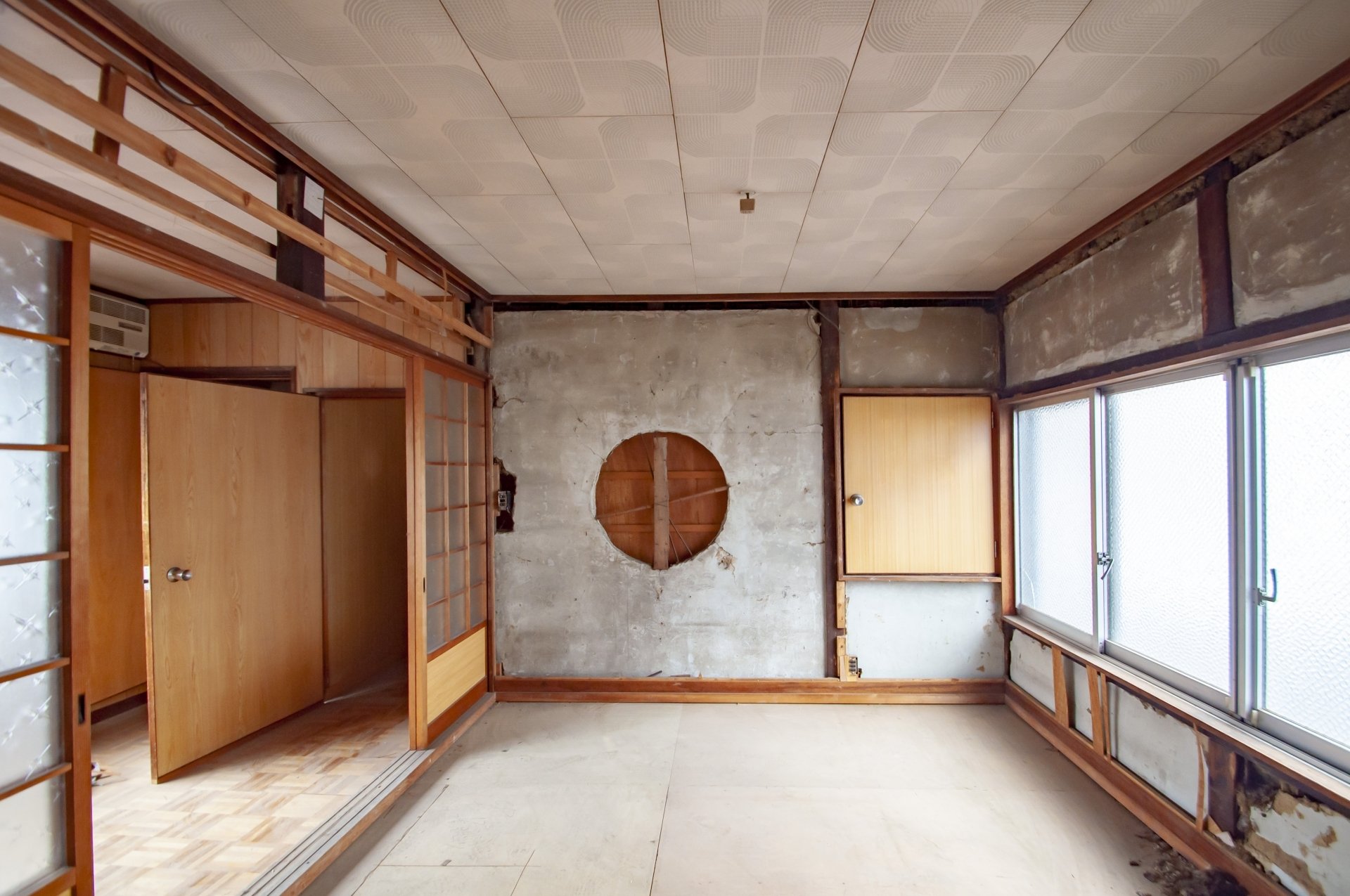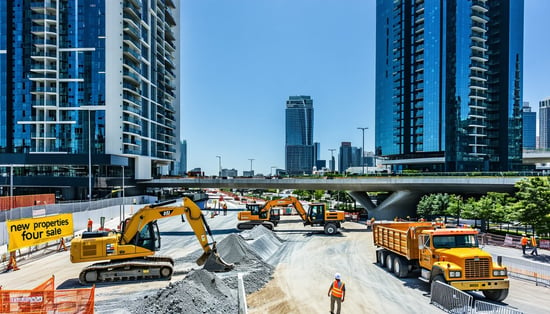When considering the purchase of a condominium, many people are confused about the question of whether to choose a "low-rise condominium" or a "high-rise condominium (tower condominium)".
In the recent real estate market, both have different attractions and features, and the best choice depends greatly on the buyer's lifestyle and sense of value. Especially in central Tokyo, low-rise condominiums in quiet residential areas and high-rise condominiums for convenience coexist, each forming its own unique market.
In this article, we will explain in detail the essential differences between low-rise and high-rise condominiums (tower condominiums) based on our many years of experience in the real estate industry as INA & Associates, Inc. Starting from the legal definition, the advantages and disadvantages of each, and the criteria for selection, we will comprehensively provide you with the information you need to select a condominium.
Purchasing a home is one of the most important investments you will make in your life. Through this article, we will provide you with expert knowledge in an easy-to-understand manner so that you can choose the condominium that best suits your lifestyle.
Basic definitions of low-rise and high-rise condominiums
Legal Definitions and Classification Criteria
In classifying condominiums, the first thing to understand is the legal definition. In fact, there is no clear definition of "low-rise condominium" in the Building Standard Law or Fire Defense Law. However, practical classification criteria have been established because the applicable legal regulations change step by step depending on the height of the building.
Low-risecondominiums generally refer to condominiums with two to five stories. In particular, buildings with three or fewer stories are definitely classified as low-rise condominiums. These buildings are often constructed in residential zones with low floor-area ratios, and are characterized by a design that emphasizes harmony with the surrounding environment.
On the other hand,the definition of ahigh-risecondominium is based on the regulations of the Building Standards Law and the Fire Defense Law. The Fire Defense Law defines a "high-rise building" as one that exceeds 31 meters in height, and this is the standard for high-rise condominiums in general. 31 meters is also the height limit that a fire ladder truck can handle, making it an important boundary in terms of disaster prevention.
Furthermore,high-rise condominiums (tower condominiums) are generally 20 or more stories high, as the Building Standard Law requires special structural calculations that apply to buildings 60 meters or more in height. These buildings are required to have stricter earthquake resistance standards and disaster prevention equipment.
Differences in Structural Features
There are significant differences between low-rise and high-rise condominiums in the building structure itself.
Low-rise condominiumsoften usea wall-typestructure. The wall-type structure supports the building with walls instead of columns and beams, and is stronger against earthquakes. However, this structure may limit the freedom to change the floor plan for future remodeling.
In high-rise condominiums,rigid-framestructures andseismic damping/isolationstructures are commonly used. Rigid-frame structures are supported by pillars and beams, and are characterized by a high degree of freedom in floor plans and ease of future remodeling. In particular, tower condominiums are often equipped with seismic damping devices to reduce earthquake shaking and seismic isolation devices to separate the building from the ground, thereby minimizing the shaking that is characteristic of high-rise buildings.
Differences in facilities according to legal regulations
The differences in legal regulations that apply depending on the height of the building are also clearly evident in terms of facilities.
Buildings over 31 meters high (approximately 10 stories) arerequired bythe Fire Service Lawto haveemergency elevators. This is designed to provide firefighters with quick access to upper floors in the event of a fire. In addition, the installation standards for evacuation stairways have become stricter, and it is required to ensure 2-way evacuation.
Even stricter standards apply to super high-rise buildings exceeding 60 meters in height (approximately 20 stories). The Building Standard Law requiresspecial structural calculationsand detailed studies of earthquake and wind pressure.They are also required to installprivate power generatorsanddisaster preventioncenters to ensure safety in the event of a disaster.
The table below summarizes the main differences in legal regulations according to building height.
| Building Classification |
Height |
Approximate number of floors |
Main Legal Regulations |
| Low-rise apartments |
Less than 31m |
2-10 floors |
General Building Standard Law |
| High-rise apartments |
31m or more but less than 60m |
10-20F |
Obligation to install emergency elevator, secure 2-way evacuation |
| High-rise apartments |
60m or more |
More than 20 floors |
Special structural calculation, private power generator, disaster prevention center |
These differences in legal regulations will affect construction and maintenance costs, which will ultimately be reflected in the sales price and management fees.
Advantages and disadvantages of low-rise condominiums
Major advantages of low-rise condominiums
Ensuring a quiet and serene living environment
The most attractive feature of low-rise condominiums is the quiet and serene living environment. This is because these condominiums are often built in areas with strict restrictions on building height and use, such as Type 1 and Type 2 low-rise residential areas.
In these areas, the Building Standard Law limits building height to 10 or 12 meters and prohibits the construction of commercial facilities and factories. As a result, the surrounding environment is quiet and residential-oriented, and a good living environment is maintained over the long term.
In addition, the floor-area ratio (ratio of total floor space to site area) is set low, ensuring sufficient distance between buildings, which is excellent for protecting privacy and ensuring sunlight and ventilation. The area is rich in greenery, providing an ideal living environment for the child-rearing generation.
Safety and ease of evacuation in the event of a disaster
Low-rise condominiums have a great advantage in terms of safety in the event of a disaster. Even if the elevators stop in the event of an earthquake or other disaster, evacuation by stairs is relatively easy from the 2nd to 5th floors.
This is an important safety factor, especially for households with elderly people or small children. In addition, rescue operations by fire ladder trucks can be reliably handled on the lower floors, and safety in the event of a fire is also highly valued.
During the Great East Japan Earthquake, there were many reports of elevators being stopped for long periods of time in high-rise condominiums, causing great inconvenience to residents on upper floors. Based on this experience, the safety of low-rise condominiums is a major attraction for buyers who place a high priority on risk in the event of a disaster.
Community Building among Residents
Low-rise condominiums have a small total number of units, making it easier for residents to build face-to-face relationships with each other. Generally, the size of most condominiums is between 20 and 50 units, creating natural opportunities for residents to interact with each other.
The existence of such a community is also a great advantage in terms of crime prevention. Residents recognize each other, which increases the likelihood of early detection of intruders. For those raising children, cooperative relationships with neighbors will also help ensure the safety of their children.
In the management of the management association, decision-making by a small group of elite residents becomes possible, and the residents' opinions are easily reflected in the maintenance and management of the building and repair work.
Major Disadvantages of Low-rise Condominiums
Constraints on Convenience
Because low-rise condominiums are often located in quiet residential areas, distance from train stations and commercial facilities can be a challenge. Particularly in central Tokyo, it is difficult to find low-rise condominiums within a 10-minute walk of a station, which may not be suitable for those who value convenience in commuting to work or school.
As for daily shopping, there may be no large commercial facilities or convenience stores within walking distance, and it is not uncommon for people to have to travel by car. For working households and elderly households, this convenience limitation is a factor that can greatly affect quality of life.
Impact of external sight lines and noise
Low-rise condominiums may be subject to the effects of sight lines from the street or adjacent buildings. Particularly in units on the first or second floor, it may be necessary to keep curtains or blinds closed at all times to block the view of passersby and neighbors.
In addition, units facing a road may be susceptible to the sounds of passing cars and conversations of passersby, making it difficult to maintain a quiet atmosphere. This problem can be particularly pronounced in properties along major roads.
Restrictions on remodeling
Wall-type construction, which is often used in low-rise condominiums, limits the freedom to change the floor plan for future remodeling. Since structurally important walls cannot be removed, major floor plan changes are difficult.
This restriction can be a major disadvantage for those who wish to customize their living space in response to lifestyle changes. Before purchasing, you need to fully consider future changes in your living style and carefully determine whether you will be satisfied with the current floor plan for the long term.
Advantages and disadvantages of high-rise condominiums (tower condominiums)
Major advantages of high-rise condominiums
Excellent location and convenience
High-rise condominiums are generally built in front of train stations or in convenient locations in central Tokyo. Many tower condominiums, in particular, are conveniently located within a 5-minute walk from major train stations, greatly contributing to time savings in commuting to and from work and school.
In addition, commercial facilities such as convenience stores, cafes, and clinics are often located on the ground floor, making daily life much more convenient. 24-hour facilities provide an ideal living environment for busy business people and dual-income households.
The surrounding area is also well-stocked with large-scale commercial facilities, cultural facilities, and medical institutions, making it an ideal environment for those who wish to enjoy urban living to the fullest.
Excellent views and a sense of openness
One of the major attractions of high-rise condominiums is the view from the upper floors. Tower condominiums in central Tokyo offer breathtaking views of Tokyo Bay, Mt. Fuji, and the city skyline on a daily basis.
Since there are no buildings around to block the view on the upper floors, large windows can be installed, allowing an abundance of natural light into the rooms. Also, good ventilation allows for an open and airy living space even in an urban area.
The beauty of the night view is another attraction of high-rise condominiums, especially for units facing south or east, which provide a luxurious living environment with a panoramic view of the city's nightscape.
Well-equipped common facilities
Modern tower condominiums offer a variety of common facilities that enhance the quality of life for residents. Hotel-like facilities include a fitness gym, swimming pool, lounge, guest room, kids' room, and sky garden.
These facilities allow residents to enjoy refreshment and entertainment within the condominium without having to go out. Especially since the Corona Disaster, these common facilities are becoming even more valuable as the time spent at home increases.
In addition, 24-hour manned concierge services are often provided, offering a variety of services such as receiving home deliveries, taking care of dry cleaning, and arranging cabs.
Major Disadvantages of High-Rise Apartments
Elevator congestion and waiting time
One of the most significant disadvantages of high-rise condominiums is elevator congestion. Especially during the morning commute and evening commute home, elevator wait times can be long and stressful to daily life.
In tower condominiums with a total of several hundred units, increasing the number of elevators may not be a fundamental solution. In addition, if elevators are shut down in the event of a disaster, residents on upper floors are forced to take the stairs, which can be a major burden.
Shaking and psychological anxiety during earthquakes
High-rise buildings are susceptible to long-period seismic motions during earthquakes and sway differently than low-rise buildings. Even if the safety of the building itself is ensured, the shaking is amplified on high-rise floors, causing residents to feel uneasy.
Especially in large-scale earthquakes such as the Great East Japan Earthquake, shaking on upper floors can continue for several minutes, which may cause furniture to topple over and damage interior rooms. There is also a risk that residents on upper floors may become isolated due to prolonged elevator stoppages.
Expensive management fees and reserve for repairs
Management fees tend to be high in high-rise condominiums due to elevator maintenance and inspection costs, 24-hour management costs, and maintenance costs for common facilities. It is not uncommon, especially in tower condominiums, for monthly management fees to range from 30,000 yen to 50,000 yen.
Also, for future large-scale repair work, repair reserve funds may be set at a high level due to the high construction costs inherent in high-rise buildings. Special construction methods and equipment are required for exterior wall work and rooftop waterproofing, which can cost several times as much as for ordinary condominiums.
The table below summarizes the major differences between low-rise and high-rise condominiums.
| Comparison Items |
Low-rise condominium |
High-rise condominium |
| Location Characteristics |
Quiet residential area |
In front of station/downtown area |
| Living Environment |
Quietness / Lush greenery |
Convenience/Urban |
| Safety in case of disaster |
Ease of evacuation |
Elevator-dependent |
| View |
Limited |
Excellent views |
| Community |
Close Relationships |
Limited Relationships |
| Management fee |
Relatively inexpensive |
High |
| Common facilities |
minimum |
full |
Criteria when selecting an apartment
Selection guidelines by lifestyle
Selection Criteria for Child Rearing Generation
For the child-rearing generation, choosing a condominium is an important decision that will affect the environment in which their children grow up. Low-rise condominiums offer a quiet and safe living environment suitable for raising children.
In residential areas where low-rise condominiums are built, there is little traffic, creating an environment where children can safely play outside. In addition, because residents tend to form a community with each other, the neighborhood is well watched over by residents, providing peace of mind in terms of crime prevention.
On the other hand, for dual-income households, convenience in terms of transportation to and from daycare centers and commuting to work is important. In this case, a high-rise condominium near a station may be more suitable for daily life, which is often time-sensitive.
Selection Criteria for Senior Citizens
Convenience in daily living and access to medical facilities are important for seniors. In central Tokyo and areas in front of train stations where high-rise condominiums are located, medical facilities such as general hospitals, clinics, and pharmacies are available, which is a great advantage for those who need to make regular visits to the hospital.
Concierge services in high-rise condominiums also provide services that alleviate physical burdens, such as receiving home deliveries and handling various procedures on behalf of residents. The presence of elevators is also an important means of transportation for those who have difficulty ascending and descending stairs.
However, considering the risk of elevator stoppage in the event of a disaster, it is wise to select units on relatively low-rise floors.
Selection Criteria for Singles and DINKS Households
Singles and DINKS (married couples without children who work together) households tend to value convenience and an urban lifestyle. Urban centers where high-rise condominiums are located offer a wide variety of restaurants, shopping, and entertainment facilities, allowing them to enjoy an active urban lifestyle.
In addition, fitness gyms and lounges, which are common facilities in high-rise condominiums, provide a place to refresh oneself in the midst of a busy daily routine. Another major advantage is the reduced commuting time, allowing you to make the most of your private time.
Selection Criteria from an Investment Perspective
From a real estate investment perspective, low-rise and high-rise condominiums have different characteristics. Low-rise condominiums have low risk of future environmental changes due to the use restrictions of the residential zones in which they are located, and have excellent stability in asset value.
On the other hand, high-rise condominiums, especially tower condominiums, tend to have high potential for short-term price appreciation due to their scarcity and superior location. In fact, tower condominium prices have nearly doubled over the past two decades, making them increasingly attractive as an investment product.
Differences in Rental Demand
When considering rental operations, the target tenants differ. Low-rise condominiums are popular among families and tenants who value quietness and can expect stable long-term rental income.
High-rise condominiums are popular among singles and dual-income households that value convenience, and tend to offer higher rent levels. However, management fees and reserve funds for repairs are expensive, so careful consideration must be given to the actual profitability of the property.
Future Sale Potential
When considering future sales, the scarcity of the location and continuity of demand are important factors. Tower condominiums located in front of a station in central Tokyo are always expected to be in constant demand and have excellent liquidity when sold.
Low-rise condominiums are in persistent demand from buyers seeking a good living environment and can be expected to maintain their asset value, especially for properties located in high-end residential areas in central Tokyo.
Budgetary Considerations
Differences in Initial Costs
The initial cost of purchasing a condominium should include not only the property price, but also other expenses such as registration fees, brokerage fees, and fire insurance premiums. As property prices tend to be higher for high-rise condominiums, these other costs will also be proportionally higher.
In addition, the larger the mortgage loan amount, the greater the impact of interest rate fluctuation risk. It is important to carefully consider your repayment plan to prepare for future interest rate rises.
Long-term burden of maintenance costs
Maintenance and management costs after the purchase of a condominium are an important factor to consider as a long-term household financial burden. The table below provides an estimate of typical maintenance costs.
| Cost Item |
Low-rise condominium |
High-rise condominium |
| Management fee (monthly) |
1.5-25,000 yen |
25,000-50,000 yen |
| Reserve for repairs (monthly) |
10,000 - 20,000 yen |
2.0-40,000 yen |
| Property tax (annual) |
150,000-300,000 yen |
250,000-600,000 yen |
| Fire insurance (annual) |
20,000-40,000 yen |
30,000-60,000 yen |
These costs vary greatly depending on the size, facilities, and location of the condominium, so detailed confirmation is required before purchase.
Mortgage Selection
The choice of mortgage is also an important factor in the purchase of a condominium. In the case of low-rise condominiums, the total amount of repayment can be controlled by setting a shorter repayment term because the property price is relatively low.
In the case of a high-rise condominium, the property price is higher, so a longer repayment term may be required. In this case, the choice of interest rate type (fixed or variable) will greatly affect the long-term repayment burden, so careful consideration is required.
Conclusion
Summary of key points in choosing between low-rise and high-rise condominiums
This article has provided a comprehensive explanation of the differences between low-rise and high-rise condominiums (tower condominiums), from legal definitions to actual living comfort and investment value.
Low-rise condominiumsare a good choice for those who value a quiet living environment and safety. They provide an ideal living environment, especially for those raising children and those who seek tranquility. They also offer significant advantages in terms of safety in the event of a disaster and community building among residents. On the other hand, there are limitations in terms of convenience, and access to stations and commercial facilities can be time-consuming.
High-rise condominiums (tower condominiums) are the right choice for those who value an urban lifestyle and convenience. Their excellent location and extensive common facilities make for a comfortable urban lifestyle. In terms of investment value, they are also attractive from an asset-building perspective, with prices having doubled over the past 20 years. However, management fees and reserve funds for repairs tend to be high, and long-term maintenance costs should be fully considered.
Action Guidelines for Optimal Selection
The most important factor in selecting an apartment is to make a choice that is consistent with your lifestyle and future living arrangements. We encourage you to carefully consider the following guidelines for action.
Importance of a site visit
Please be sure to visit the site to confirm the actual living environment, which cannot be confirmed by information in brochures or on the Internet alone. For low-rise condominiums, it is important to experience the quietness and abundance of greenery in the surrounding area, and for high-rise condominiums, it is important to actually experience the view and the quality of common facilities.
In addition, you can get a more accurate grasp of the living environment by visiting at different times of the day, such as weekdays and holidays, and during the daytime and at night.
Consideration of long-term living plans
Purchasing a condominium is generally a long-term residence. It is important to make choices based not only on your current lifestyle, but also on how your life will change over the next 5 to 10 years.
Consider how each living environment can accommodate future life events such as children growing up, caring for parents, changing jobs or retiring.
Consultation with an Expert
Purchasing real estate is one of the largest investments you will make in your life. There are a wide range of areas that require specialized knowledge, including legal procedures, mortgage options, and tax treatment.
We recommend that you consult with a trusted real estate agent, mortgage advisor, tax accountant, or other expert to make a comprehensive decision.
Suggested next steps of action
After reading this article, we hope you now understand the differences between low-rise and high-rise condominiums. As your next step, we suggest the following actions
First, please clarify your priorities. By sorting out which factors are most important to you, such as convenience, living environment, safety, and investment value, you will have a clear direction for your choice.
Then, confirm the gap between theory and actual living comfort through actual property tours. By comparing multiple properties, you will be able to make a better choice.
INA&Associates Inc. assists each client in selecting the condominium best suited to his or her lifestyle. From low-rise to high-rise condominiums, we provide a wide range of property information and expert advice. If you are considering purchasing a condominium, please do not hesitate to contact us. We will do our best to support your search for your ideal home.
Frequently Asked Questions
Q1. Which is more resistant to earthquakes, low-rise or high-rise condominiums?
A1.Safety against earthquakes depends greatly on the structure of the building and the age of construction, so it is difficult to say which is stronger.
Wall-type structures, which are often used in low-rise condominiums, are structurally stable because the walls as a whole are able to withstand seismic forces. The low height of the building also suppresses amplification of seismic shaking.
On the other hand, modern high-rise condominiums employ the latest earthquake-proofing, vibration control, and seismic isolation technologies to ensure adequate safety against major earthquakes. Due to revisions to the Building Standards Law, buildings constructed after 1981 (the new earthquake-proof standard) are designed so that they will not collapse even in the event of a major earthquake.
It is important to check the date of construction and the seismic resistance standard applied. Before purchasing a building, it is recommended to check the building's structural calculation sheet and the results of the seismic diagnosis.
Q2. Why are management fees for tower condominiums so high?
A2.The main reasons why management fees for tower condominiums are expensive are due to the following factors
First,a large percentage of the cost is forelevator maintenance and inspections. Tower condominiums are equipped with multiple elevators, and maintenance of high-speed elevators requires specialized skills and high costs.
Second,there arelaborcosts for the24-hour management system. Concierge services and security guards ensure the safety and convenience of residents, but these services come at a reasonable cost.
In addition, the cost ofmaintaining and managing common facilitiesalso has an impact. Facilities such as fitness gyms, swimming pools, and lounges require professional cleaning and equipment maintenance, and these costs are reflected in management fees.
Efficiency due to the size of the buildingshould also be considered. Although a larger total number of units spreads the burden per unit, the absolute cost of maintaining the building as a whole is higher.
Q3. Which is more advantageous in terms of future asset value?
A3.The future value of assets is largely determined by location and scarcity.
In the case oflow-risecondominiums, properties located in high-end residential areas in central Tokyo are expected to maintain stable asset values due to low risk of future environmental changes caused by zoning restrictions. In particular, low-rise condominiums in historic residential areas are expected to retain their value over the long term due to their scarcity.
High-rise condominiums (tower condominiums) have a short-term advantage in terms of investment returns, as their prices have doubled over the past 20 years. Continuous demand is expected due to the scarcity of station-front locations and the concentration of urban functions.
However, the future burden of large-scale repair costs and issues associated with the aging of buildings must also be taken into consideration. In particular, tower condominiums may require high costs for exterior wall construction and facility renewal.
Ultimately, it is important to make a comprehensive judgment based on the rarity of the location, the quality of the building, and its management status.
Q4. Which would you recommend for people raising children?
A4.For the child-rearing generation, the best choice depends on the age and educational policy of your children.
Low-rise condominiumsare suitable for child-rearing in the following respects
-Quietliving environment where children can safely play outside.
- Community among residents allows the entire community to look out for each other.
-Easy evacuation and high safety in case of disaster.
-Safe routes to and from school in a residential area with little traffic
High-rise condominiumsoffer the following advantages
-Often have good access to daycare and schools
-High commuting convenience for dual-income households
-Shared facilities (e.g., kids' rooms) allow children to play safely
-Security is excellent, and security is assured.
High-rise condominiums tend to be suitable for dual-income households with time constraints, while low-rise condominiums are more suitable for those who want to provide a spacious environment for their children.
Q5. What are some important points to check before purchasing?
A5.Please be sure to check the following important points before purchasing a condominium.
Building-related confirmation items:
-Construction date and applied seismic resistance standards
-Financial status of the management association and the balance of the repair reserve fund
-Past repair history and future repair plans
-Management company performance and management status
Items to be checked for location and environment:
-Use zoning and future development plans
-Transportation access and actual time required
-Commercial, medical and educational facilities in the vicinity
-Disaster risk (check hazard maps)
Legal and contract related checks:
-Detailed confirmation of Important Information Statement
-Contents of the management agreement and bylaws
-Mortgage terms and repayment plan
-Fire and earthquake insurance requirements
Economic checks:
-Appropriateness of the property price (comparison with the surrounding market price)
-Monthly maintenance costs (management fees, reserve for repairs, taxes)
-Future sale potential and rental demand
Failure to make these checks may result in unforeseen problems after purchase. We recommend that you carefully consider this matter with the advice of an expert.


.png)


